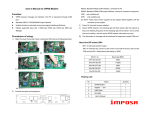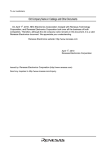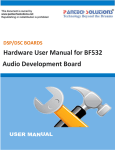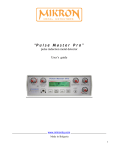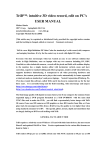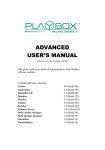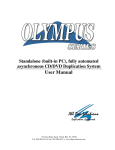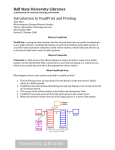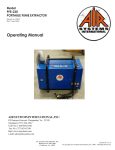Download Alarm Box User Manual
Transcript
Alarm Box User Manual Before use the product, please read this manual carefully. TABLE OF CONTENT Main Feature………………………………………………………………… … …11 Main Function……………………………………………………………………1 1 Installation Diagram………… ……………………………………………………22 Connection ………………………………………………………………………3 3 Function instruction……………………………………………………………….44 DIP Switches Setting………………………………………………………………4 The Alarm Box ID Setting…………………………………………………… ……5 Factory default setting……… ……………………………………………………99 Keyboard operation………………………………………………………………10 Debugging……………………………………………………………………… …12 12 1212 Installation……………………………………………………………………… … …13 Technical Data………………… ………………………………………………… 13 …13 Trouble Shooting………………………………………………………………… 13 Main Function 1. Main Function The main function of the alarm box is 2. Main Features Ø IP66 waterproof design. alarm linkage. The alarm box can call the Ø Power supply 9V-24V AC/DC. different presets quickly and automatica- Ø RS485 of the dome and the keyboard lly according to the different alarm signals. controlling by DIP switches, 2400bps, Connected with a dome camera, it can 4800bps, 9600bps baud rates selectable. monitor different important places accor- Ø Setting the alarm box ID (0-255) by ding to the Sequence of the alarm signal setting DIP Switches. acquired, realizing the dynamic spot video Ø With the function of arm and disarm. surveillance. Ø Setting the attribute (NO/NC) of the The function of alarm linkage enables alarm box relay input by the keyboard. the system get the video information of Ø Setting the alarm input port number of alarm spot quickly. When there is alarm the alarm box in accordance with the signal input, the alarm box can output two dome presets by keyboard. relay signals (NO/NC) for the user's Ø With the function of alarm spot memory. reference. Ø Setting the reset mode and interval time after alarming by keyboard. 3.Installation Diagram Keyboard Rs485 BUS Alarm Box Dome 1 Installation Diagram Magnifying Drawing J1 J2 J3 J4 J5 J6 J7 J8 J9 J10 J11 J12 J13 J14 J15 J16 PO WE R In1 In2 In3 In4 In5 In6 ALARM INPUT Power Supply Alarm Input In7 In8 J17 J18 J19 J20 RA+ RB- TA+ TB- Rs485 Rs485 Rs485 Input J21 J22 J23 J24 OUT1 Alarm Output (Keyboard) Rs485 Output (Dome) Alarm box relay input (1 to 8 channel): There are two cables connected up relaysignal in each channel. If the sensor conn-ected with the N channel is Number The relay input attribute of this channel should be set to Number.otherwise NC. 2 OUT2 ALARM OUTPUT Connection 4. Connection J1 J2 J3 J4 J5 J6 J7 J8 J9 J10 J11 J12 J13 J14 J15 J16 POWER ① In1 In2 In3 J17 J18 J19 J20 RA+ RB- TA+ TB- ALARM INPUT Rs485 Rs485 ② ③ ④ In4 In5 In6 In7 In8 J21 J22 J23 J24 OUT1 OUT2 ALARM OUTPUT ⑤ ① Power supply: AC or DC 9V-24V, power only 7 alarm input channelbeing used the consumption ≥1W; , connecting to the two two terminals of the 8 thalarm input channel ter minals in the POWER port. (There is no should be short circuit or open circuit. Ac- “+”,“-”.) cording to the reply inputs attribute. ② Alarm input: First make sure the attrib- ③ RS485 input controlling cable: connec- ute of the sensor in each channel connected ting to the RA+ and RB- terminals. with alarm box input is NO or NC. The attr- (The controllingsignal is from keyboard) ibute of the sensor in each channel should be strictly in accordance with the alarm in- ④ Rs485 output controlling cable: conne- put attribute set in each channel. The first cting to the TA+ and TB- terminals. to eighth channel alarm input should be (The controlling signal is output to the connected with the two terminals in IN1, In2, dome camera.) IN3, IN4, In5,IN6, IN7, and IN8 accordingly. If the alarm input channels being used is ⑤ Alarm output: There are two channels less than 8, the two terminals of the unused relay output, OUT1 and OUT2. Set NO or alarm input channel should be short circuit NC by setting the jumper JP5 and JP6 on to set the relay attribute NC. Accordingly PCB Board. the two terminals of the unused alarm input channel should be open circuit to set the reply attribute NO. For example, if there is NOTICE Conducting the connection carefully to avoid misconnection as the connecting ports is joined closely. 3 Function instruction 6. DIP Switch Setting 5. Function instruction Ø User can set the alarm box arm or disa- As following below,SW1、SW2 are rm via keyboard. When the alarm box is 8-bitsDIP Switches,SW1is used for ala- arm, besides accepting the operation to it rm box setting with ID No.(0-255),The and dome camera, the alarm box detects bit 5、6 of Sw2 are used for Baud Rate of the input status all the time. Once there is the Alarm Box and the dome(2400BPS、 alarm signal input, the alarm linkage will 4800BPS、9600BPS).,The bit7、8 are be activated, as well as the alarm output. used for the Baud Rate of Alarm Box and When the alarm input signal disappears, the Keyboard(2400bps、4800bps、 the alarm linkage will keep on working u- 9600BPS).The first four bits of SW2 is for ntil the alarm linkage is manually reset or setting factory default,and there is no automatically reset (via the keyboard co- other function temporarily. The resetdip ntroller). Only after the alarm linkage res- switch setting is not effective unless it is et completely will the alarm output disap- initializing again pear automatically. When the alarm box is disarmed, the alarm box will not respond to the alarm input. Ø User can set the reset mode of alarm linkage and alarm output via keyboard. The alarm linkage and alarm output can be set manually as well as automatically. The auto-reset interval time can be set via keyboard. NO Sw1 J1 J2 J3 J4 J5 J6 J7 J8 J9 J10 J11 J12 J13 J14 J15 J16 P O WE R In1 In2 In3 In4 In5 ALARM INPUT 4 NC NO NC Sw2 In6 In7 In8 J17 J18 J19 J20 RA+ RB- TA+ TB- Rs485 Rs485 J21 J22 J23 J24 OUT1 OUT2 ALARM OUTPUT Appendix 7. The Alarm Box ID Setting The alarm box ID number(0-255)is set by setting the DIP Switch Sw1, Detailed setting refer to the table below.The circle “1”means the DIP switch setting should be “ON”;the circle “0”means “OFF”. ID D I P S w i t c h e s (SW1) (Bit) 1 2 3 4 5 6 7 8 0 ID D I P S w i t c h e s (SW 1) (Bit) 1 2 3 4 5 6 7 8 34 0 1 0 0 0 1 0 0 1 1 0 0 0 0 0 0 0 35 1 1 0 0 0 1 0 0 2 0 1 0 0 0 0 0 0 36 0 0 1 0 0 1 0 0 3 1 1 0 0 0 0 0 0 37 1 0 1 0 0 1 0 0 4 0 0 1 0 0 0 0 0 38 0 1 1 0 0 1 0 0 5 1 0 1 0 0 0 0 0 39 1 1 1 0 0 1 0 0 6 0 1 1 0 0 0 0 0 40 0 0 0 1 0 1 0 0 7 1 1 1 0 0 0 0 0 41 1 0 0 1 0 1 0 0 8 0 0 0 1 0 0 0 0 42 0 1 0 1 0 1 0 0 9 1 0 0 1 0 0 0 0 43 1 1 0 1 0 1 0 0 0 1 1 0 1 0 0 10 0 1 0 1 0 0 0 0 44 0 11 1 1 0 1 0 0 0 0 45 1 0 1 1 0 1 0 0 12 0 0 1 1 0 0 0 0 46 0 1 1 1 0 1 0 0 13 1 0 1 1 0 0 0 0 47 1 1 1 1 0 1 0 0 14 0 1 1 1 0 0 0 0 48 0 0 0 0 1 1 0 0 15 1 1 1 1 0 0 0 0 49 1 0 0 0 1 1 0 0 16 0 0 0 0 1 0 0 0 50 0 1 0 0 1 1 0 0 17 1 0 0 0 1 0 0 0 51 1 1 0 0 1 1 0 0 18 0 1 0 0 1 0 0 0 52 0 0 1 0 1 1 0 0 19 1 1 0 0 1 0 0 0 53 1 0 1 0 1 1 0 0 20 0 0 1 0 1 0 0 0 54 0 1 1 0 1 1 0 0 21 1 0 1 0 1 0 0 0 55 1 1 1 0 1 1 0 0 22 0 1 1 0 1 0 0 0 56 0 0 0 1 1 1 0 0 23 1 1 1 0 1 0 0 0 57 1 0 0 1 1 1 0 0 24 0 0 0 1 1 0 0 0 58 0 1 0 1 1 1 0 0 1 0 1 1 1 0 0 25 1 0 0 1 1 0 0 0 59 1 26 0 1 0 1 1 0 0 0 60 0 0 1 1 1 1 0 0 27 1 1 0 1 1 0 0 0 61 1 0 1 1 1 1 0 0 28 0 0 1 1 1 0 0 0 62 0 1 1 1 1 1 0 0 29 1 0 1 1 1 0 0 0 63 1 1 1 1 1 1 0 0 30 0 1 1 1 1 0 0 0 64 0 0 0 0 0 0 1 0 31 1 1 1 1 1 0 0 0 65 1 0 0 0 0 0 1 0 32 0 0 0 0 0 1 0 0 66 0 1 0 0 0 0 1 0 33 1 0 0 0 0 1 0 0 67 1 1 0 0 0 0 1 0 5 Appendix ID 6 D I P S w i t c h e s (SW 1) ID D I P S w i t c h e s (SW1) (Bit) 1 (Bit) 1 2 3 4 5 6 7 8 68 0 0 1 0 0 0 1 0 102 0 69 1 0 1 0 0 0 1 0 70 0 1 1 0 0 0 1 71 1 1 1 0 0 0 72 0 0 0 1 0 73 1 0 0 1 74 0 1 0 75 1 1 0 76 0 77 2 3 4 5 6 7 8 1 1 0 0 1 1 0 103 1 1 1 0 0 1 1 0 0 104 0 0 0 1 0 1 1 0 1 0 105 1 0 0 1 0 1 1 0 0 1 0 106 0 1 0 1 0 1 1 0 0 0 1 0 107 1 1 0 1 0 1 1 0 1 0 0 1 0 108 0 0 1 1 0 1 1 0 1 0 0 1 0 109 1 0 1 1 0 1 1 0 0 1 1 0 0 1 0 110 0 1 1 1 0 1 1 0 1 0 1 1 0 0 1 0 111 1 1 1 1 0 1 1 0 78 0 1 1 1 0 0 1 0 112 0 0 0 0 1 1 1 0 79 1 1 1 1 0 0 1 0 113 1 0 0 0 1 1 1 0 80 0 0 0 0 1 0 1 0 114 0 1 0 0 1 1 1 0 81 1 0 0 0 1 0 1 0 115 1 1 0 0 1 1 1 0 82 0 1 0 0 1 0 1 0 116 0 0 1 0 1 1 1 0 83 1 1 0 0 1 0 1 0 117 1 0 1 0 1 1 1 0 84 0 0 1 0 1 0 1 0 118 0 1 1 0 1 1 1 0 85 1 0 1 0 1 0 1 0 119 1 1 1 0 1 1 1 0 86 0 1 1 0 1 0 1 0 120 0 0 0 1 1 1 1 0 87 1 1 1 0 1 0 1 0 121 1 0 0 1 1 1 1 0 88 0 0 0 1 1 0 1 0 122 0 1 0 1 1 1 1 0 89 1 0 0 1 1 0 1 0 123 1 1 0 1 1 1 1 0 90 0 1 0 1 1 0 1 0 124 0 0 1 1 1 1 1 0 91 1 1 0 1 1 0 1 0 125 1 0 1 1 1 1 1 0 92 0 0 1 1 1 0 1 0 126 0 1 1 1 1 1 1 0 93 1 0 1 1 1 0 1 0 127 1 1 1 1 1 1 1 0 94 0 1 1 1 1 0 1 0 128 0 0 0 0 0 0 0 1 95 1 1 1 1 1 0 1 0 129 1 0 0 0 0 0 0 1 96 0 0 0 0 0 1 1 0 130 0 1 0 0 0 0 0 1 97 1 0 0 0 0 1 1 0 131 1 1 0 0 0 0 0 1 98 0 1 0 0 0 1 1 0 132 0 0 1 0 0 0 0 1 99 1 1 0 0 0 1 1 0 133 1 0 1 0 0 0 0 1 100 0 0 1 0 0 1 1 0 134 0 1 1 0 0 0 0 1 101 1 0 1 0 0 1 1 0 135 1 1 1 0 0 0 0 1 Appendix ID D I P S w i t c h e s (SW1) (Bit) 1 2 3 4 5 6 7 8 136 0 0 0 1 0 0 0 1 137 1 0 0 1 0 0 0 138 0 1 0 1 0 0 139 1 1 0 1 0 140 0 0 1 1 141 1 0 142 0 ID D I P S w i t c h e s (SW1) (Bit) 1 2 3 4 5 6 7 170 0 1 0 1 0 1 0 1 1 171 1 1 0 1 0 1 0 1 0 1 172 0 0 1 1 0 1 0 1 0 0 1 173 1 0 1 1 0 1 0 1 0 0 0 1 174 0 1 1 1 0 1 0 1 1 1 0 0 0 1 175 1 1 1 1 0 1 0 1 1 1 1 0 0 0 1 176 0 0 0 0 1 1 0 1 143 1 1 1 1 0 0 0 1 177 1 0 0 0 1 1 0 1 144 0 0 0 0 1 0 0 1 178 0 1 0 0 1 1 0 1 145 1 0 0 0 1 0 0 1 179 1 1 0 0 1 1 0 1 0 1 0 1 1 0 1 8 146 0 1 0 0 1 0 0 1 180 0 147 1 1 0 0 1 0 0 1 181 1 0 1 0 1 1 0 1 148 0 0 1 0 1 0 0 1 182 0 1 1 0 1 1 0 1 149 1 0 1 0 1 0 0 1 183 1 1 1 0 1 1 0 1 150 0 1 1 0 1 0 0 1 184 0 0 0 1 1 1 0 1 151 1 1 1 0 1 0 0 1 185 1 0 0 1 1 1 0 1 152 0 0 0 1 1 0 0 1 186 0 1 0 1 1 1 0 1 153 1 0 0 1 1 0 0 1 187 1 1 0 1 1 1 0 1 154 0 1 0 1 1 0 0 1 188 0 0 1 1 1 1 0 1 155 1 1 0 1 1 0 0 1 189 1 0 1 1 1 1 0 1 156 0 0 1 1 1 0 0 1 190 0 1 1 1 1 1 0 1 157 1 0 1 1 1 0 0 1 191 1 1 1 1 1 1 0 1 158 0 1 1 1 1 0 0 1 192 0 0 0 0 0 0 1 1 159 1 1 1 1 1 0 0 1 193 1 0 0 0 0 0 1 1 160 0 0 0 0 0 1 0 1 194 0 1 0 0 0 0 1 1 161 1 0 0 0 0 1 0 1 195 1 1 0 0 0 0 1 1 162 0 1 0 0 0 1 0 1 196 0 0 1 0 0 0 1 1 163 1 1 0 0 0 1 0 1 197 1 0 1 0 0 0 1 1 164 0 0 1 0 0 1 0 1 198 0 1 1 0 0 0 1 1 165 1 0 1 0 0 1 0 1 199 1 1 1 0 0 0 1 1 166 0 1 1 0 0 1 0 1 200 0 0 0 1 0 0 1 1 167 1 1 1 0 0 1 0 1 201 1 0 0 1 0 0 1 1 168 0 0 0 1 0 1 0 1 202 0 1 0 1 0 0 1 1 169 1 0 0 1 0 1 0 1 203 1 1 0 1 0 0 1 1 7 Appendix ID 8 D I P S w i t c h e s (SW1) D I P S w i t c h e s ( SW1) ID (Bit)1 (Bit)1 2 3 4 5 6 7 204 0 0 1 1 0 0 1 1 238 0 205 1 0 1 1 0 0 1 1 206 0 1 1 1 0 0 207 1 1 1 1 0 208 0 0 0 0 209 1 0 0 210 0 1 211 4 5 6 1 1 1 0 1 1 1 239 1 1 1 1 0 1 1 1 1 1 240 0 0 0 0 1 1 1 1 0 1 1 241 1 0 0 0 1 1 1 1 1 0 1 1 242 0 1 0 0 1 1 1 1 0 1 0 1 1 243 1 1 0 0 1 1 1 1 0 0 1 0 1 1 244 0 0 1 0 1 1 1 1 1 1 0 0 1 0 1 1 245 1 0 1 0 1 1 1 1 212 0 0 1 0 1 0 1 1 246 0 1 1 0 1 1 1 1 213 1 0 1 0 1 0 1 1 247 1 1 1 0 1 1 1 1 214 0 1 1 0 1 0 1 1 248 0 0 0 1 1 1 1 1 215 1 1 1 0 1 0 1 1 249 1 0 0 1 1 1 1 1 216 0 0 0 1 1 0 1 1 250 0 1 0 1 1 1 1 1 217 1 0 0 1 1 0 1 1 251 1 1 0 1 1 1 1 1 218 0 1 0 1 1 0 1 1 252 0 0 1 1 1 1 1 1 219 1 1 0 1 1 0 1 1 253 1 0 1 1 1 1 1 1 220 0 1 1 1 0 1 1 254 0 1 1 1 1 1 1 1 25 5 Prog rammab le Addr ess 1 1 1 1 1 1 1 1 0 8 221 1 0 1 1 1 0 1 1 222 0 1 1 1 1 0 1 1 223 1 1 1 1 1 0 1 1 224 0 0 0 0 0 1 1 1 225 1 0 0 0 0 1 1 1 226 0 1 0 0 0 1 1 1 227 1 1 0 0 0 1 1 1 228 0 0 1 0 0 1 1 1 229 1 0 1 0 0 1 1 1 230 0 1 1 0 0 1 1 1 231 1 1 1 0 0 1 1 1 232 0 0 0 1 0 1 1 1 233 1 0 0 1 0 1 1 1 234 0 1 0 1 0 1 1 1 235 1 1 0 1 0 1 1 1 236 0 0 1 1 0 1 1 1 237 1 0 1 1 0 1 1 1 2 3 7 8 The alarm box baud rate setting:(SW2) As the chart bellow, the circle “1”means the DIP switch setting should be “ON”; the circle “0”means “OFF” 1、The baud rate setting of the alarm box and the keyboard Baud Rate 2400bps 4800bps 9600bps D I P S w i t c h (Sw2) (Bit) 5 6 0 0 1 0 0 1 2、The baud rate setting of the alarmbox and the dome Baud Rate 2400bps 4800bps 9600bps D I P S w i t c h (Sw2) (Bit) 7 8 0 0 1 0 0 1 Factory default setting 8. Factory default setting 6. Set the attribute of the alarm input and ● The factory default alarm input and ou- input. Enter the submenu of Alarm box I/O tput attributes are NO. setup via keyboard. ● The 1-8 input channel of the alarm box 7. Port NO: input alarm input channel nu- is corresponding to the 1-8 preset of the dome. (Channel 1 to preset 1, channel 2 the preset corresponding to the alarm mber (1-8), input 0 to respond to all the 8 channels. 8. Status: The attribute of the alarm input to preset 2). channel: 1 for NO, 0 for NC. ● The alarm box ID is 1. 9. Preset: The preset corresponding to the ● The alarm box baud rate is 4800BPS. channel. (1-80) ● The alarm box is auto-reset, the auto- 10. The sensor connected to IN7 is NC in reset interval time is 5sec. ● The alarm box is arm. the normal status. If the sensor sends an open relay input to the alarm box in the alarm situation, operate as follows to make the dome point to the preset 7, for detail operations as follow: 9.Keyboard operation 1. Connect the alarm box with the keyboard and dome camera referring to diagram . NOTICE 2. Set the dome with ALEC protocol and 1) Input 7 for the Port No and press Enter; 2) Input 0 for the Status and press Enter; 3) Input 7 for the Preset and press Enter; 4) The 7th input is end up. the same baud rate with the alarm box. The dome ID is random. 3. Set the alarm box ID. 4. Electrify to alarm box and keyboard, and set the baud rate of the keyboard same to the alarm box. 5. When user conduct the operation to dome by keyboard, the dome ID number should be set the same as the ID number of the alarm box connected with the dome so as to fulfill the operation to the dome. (For example, turn up, down, left, right, set preset and call preset.) 9 Keyboard operation 9.1 Set all alarm inputs as ON, for detail operations as follow: 9.3 Reset the alarm linkage 1) Input 0 for the Port No and press Enter 3 to enter Alarm acknowledge. The screen 2) Input 1 for the Status and press Enter will appear input port No: 3) Input 0 for the Preset and press Enter 2) Input 1-8 to reset the corresponding 4) End to input alarm input linkage. Input 0 and press 1) In the submenu of Alarm setup, input ENTER to reset all the channels alarm linkage.For example: User can input 1 as well as 0, then press ENTER to reset the first alarm 9.2 Arm disarm and reset mode setting 1) In the submenu of Alarm setup, input 2 to enter Alarm enable. 2) Press 1 to switch from arm(Alarm:ON)/ disarm(Alarm:OFF)state. 3) Press“REV”“NEXT” to plus or minus the value of Reset: (0 to 50) of the reset (the value means the auto reset interval time). Press “DEL”key to set the value 0, which means manually reset. The auto-reset time is 5 times the value of the reset seconds. For example, if the value is 1, the auto-reset time is 5 seconds, if the value is 2, the auto-reset time is 10 seconds. 4) Press Enter to confirm the setting. 10 input channel. Keyboard operation 10. Debugging Ø Do the first 5 steps according to 8 keyboard operation, the keyboard could conduct the operation to the dome. If it can not control, check each step carefully. ● It is suggested that user check if the keyboard can control the dome without connecting to the alarm box. ● Check if the power supply of the ala- rm box is connected to the alarm box correctly ● Check if the input and output of the Rs485 is connected correctly. Ø If it is ok and the dome can be control- 11. Installation Ø If the system works well after the debugging, let all the cables across the cable aperture into the alarm box, screw the waterproof nut tightly. Ø Add a waterproof pat on the alarm pat on the alarm box housing and screw tightly with screws to avoid leakage. Ø The cable aperture should be down- ward when fixing the alarm box. Ø User takes all the responsibilities if he doesn't install the alarm box according to the manual and result in the circuit damage for rain leakage. ler by the keyboard set 8 presetsand call the presets to ensure 8 presets have been set in the dome. Firstclose the circuit of the N Channel (1≤N≤8), open the circuit of the otherchannels, the dome should point to preset N. If there is no action with the dome, set all the alarm box input NO via keyboard, set the N alarm input channel corresponding to preset N (1≤N≤8), then set the alarm box arm. Ø Connect the sensors in all the channels to the alarm box. If the sensor is NC, set the alarm box relay input NC after the connection and power on. Ø Test the system using the connected sensor. If there is no action with the dome, check if there is open circuit in connection lines and if the sensor works well. 11 Keyboard operation 12. Technical Data Power Supply ≥9V and ≤12V (AC or Dc) Power Consumption ≤1W Alarm Output 0.4A,125VAC;2A,30VDC Weight Sending and Receiving Controlling Mode Rs485 Sending and Receiving Baud Rate 2400BPS,4800BPS,9600BPS The Furthest Transferring Distance(0.5mm twisted-pair) 1200m Environment Temperature 0℃~+50℃ Dimensions 200*120*75(mm) 13. Trouble Shooting Problem The keyboard can not control the dome. There is no alarm linkage. There is no alarm output when changing the alarm input status. The alarm box does not work. The keyboard can not control the dome, There is alarm linkage when changing the alarm input status. There is alarm linkage, while the keyboard can not control the dome. The keyboard can control alarm box, but can not control the dome, there is no alarm linkage. The keyboard can control the dome, but there is no alarm linkage. 12 Possible Cause Solution Bad connection of power cable. Connect correctly. The badness of power supply. Change the power supply. 1、The wrong setting of the keyboard board rate; 2、The bad connection of the keyboard and the alarm box; 3、No connection. 1、The bad connection of the dome and alarm box; 2、No connection; 3、The baud rate of keyboard and alarm box is not in accordance. 1. The bad connection of the keyboard and alarm box; 2. The baud rate of the dome and alarmbox is not in accordance. 1、The bad connection of the alarm box and the dome. 2、The baud rate of the dome and the alarm box is not in accordance. 1、Bad connection of the alarm input cable; 2、The connection cable open circuit; 1. Reset the keyboard baud rate; 2. Connect the keyboard and alarm box correctly. 1、Connect the dome and alarm box correctly; 2、Reset the dome baud rate. 1、Connect the keyboard and alarm box correctly; 2、Reset the keyboard baud rate. 1、Connect the alarm box and dome correctly. 2、Reset the dome baud rate. Connect the alarm input cable correctly. Alarm Box User Manual Version V1.00















